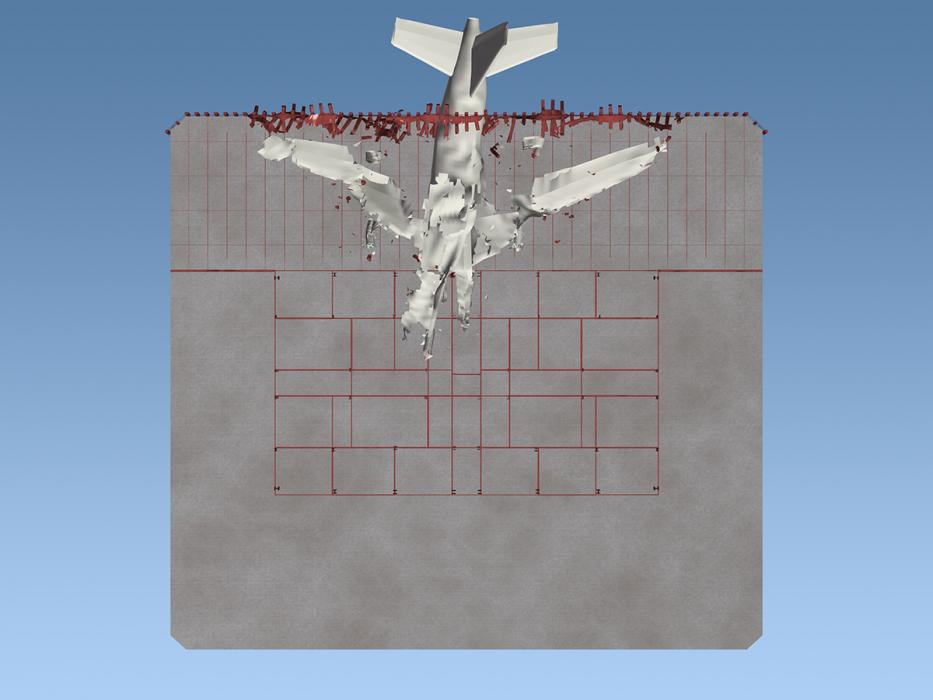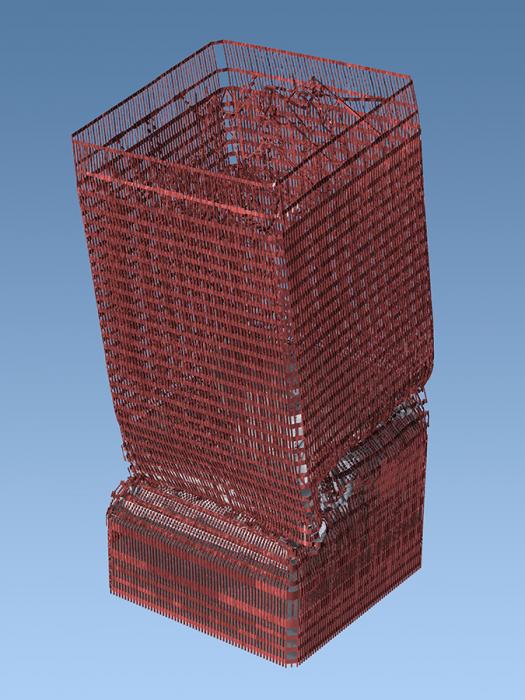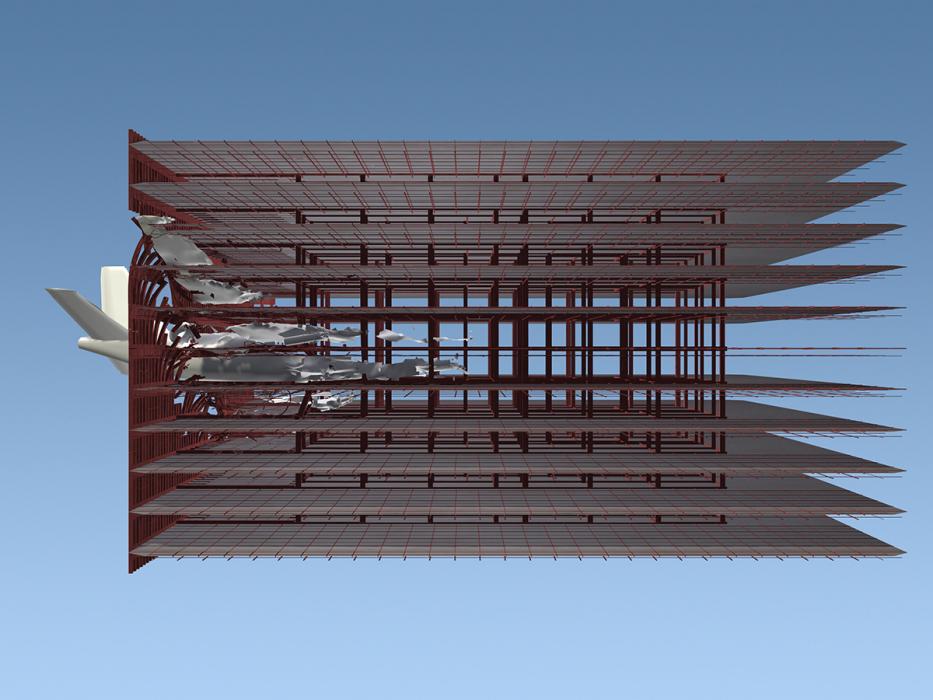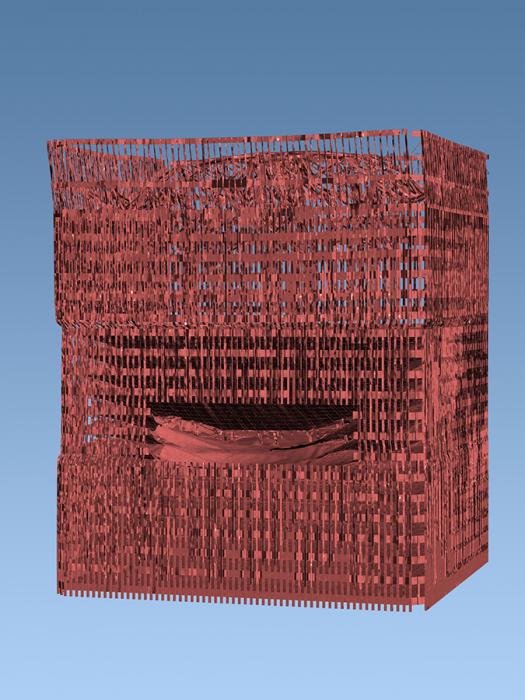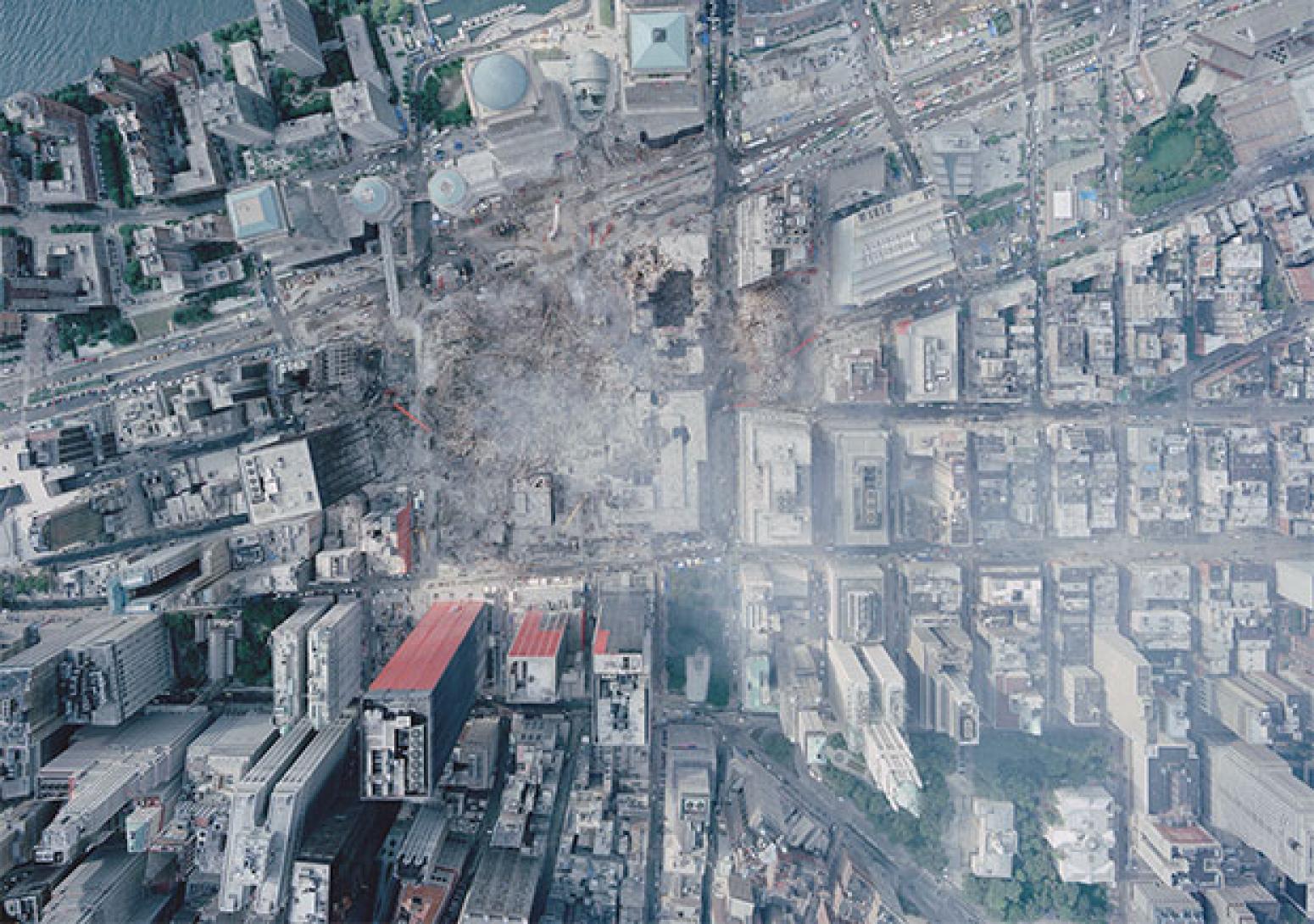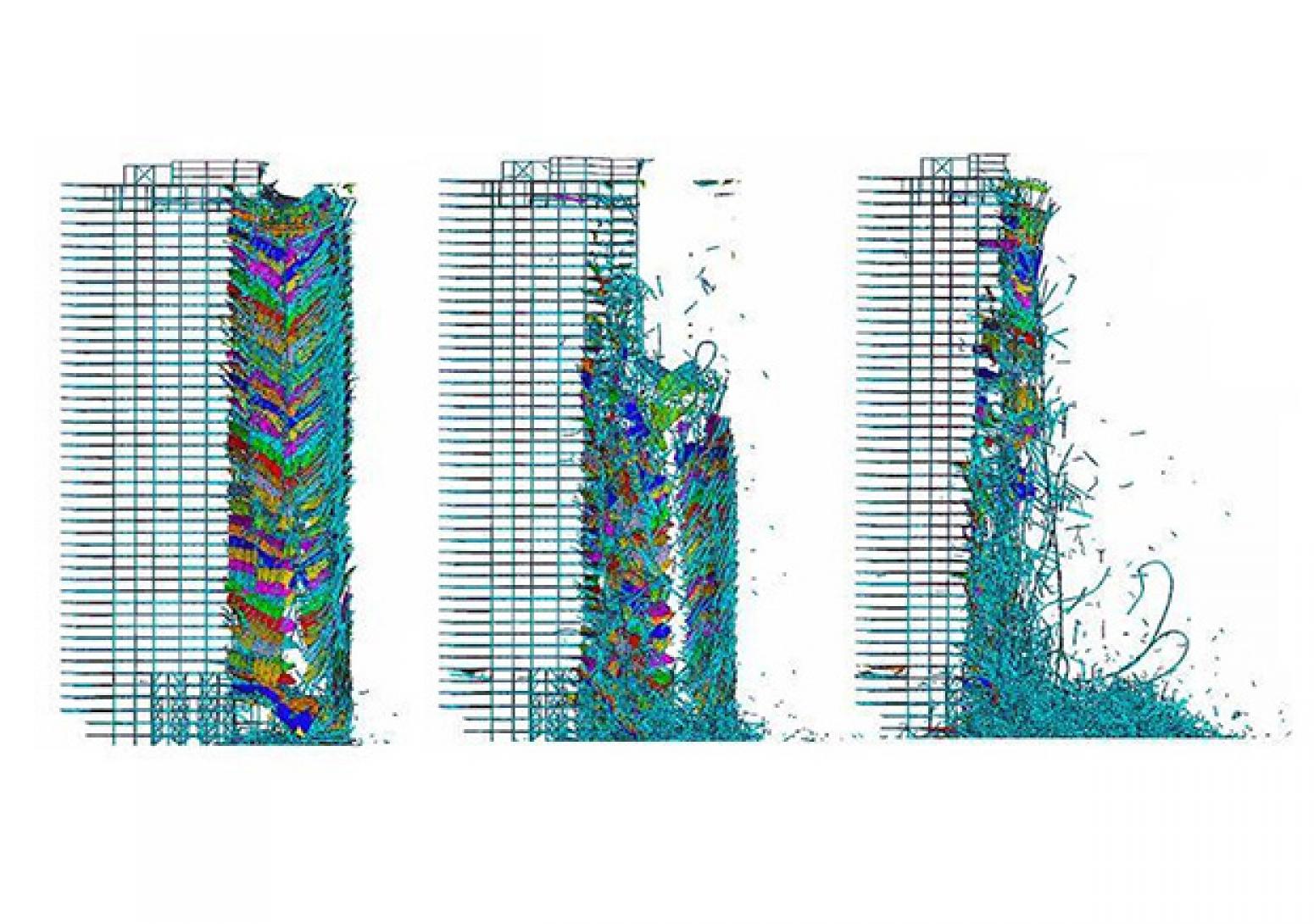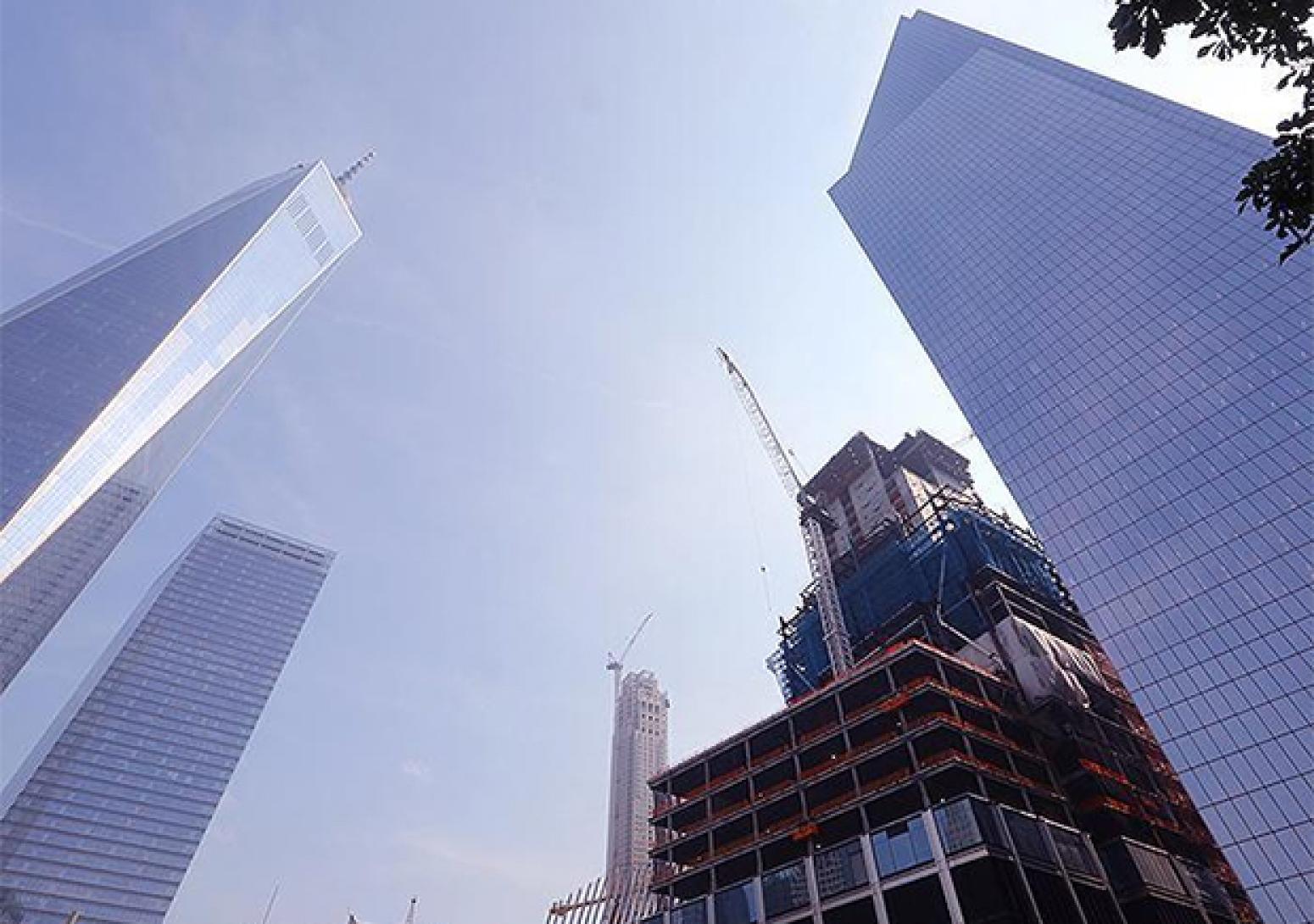
World Trade Center Forensic Investigation
The most comprehensive forensic collapse investigation of the World Trade Center towers following the terrorist attacks on September 11, 2001.
Why Did The Twin Towers Collapse?
Thornton Tomasetti (merged with Weidlinger Associates in 2015) led a pre-eminent group of engineering firms in an investigation of the collapses of the World Trade Center towers on behalf of the attorneys for Silverstein Properties, Inc. The study is the most comprehensive to date of why the Twin Towers stood for as long as they did and why they ultimately collapsed.
Collapse Investigation Analysis
Analysis of the available data – including original structural engineering plans, thousands of photos, dozens of videos, and the results of advanced computer modeling and fire evaluation techniques – enabled the engineering team to re-create the condition of the towers at various critical points on 9/11 from impact to collapse.
A critical tool used in the study was our FLEX software, which we developed to help the Department of Defense analyze structures undergoing large deformations under extreme loads. Using this software, our engineers developed sophisticated computer models to analyze events on the impacted floors.
The results established the extent of damage in the tower cores due to the airplane impacts, the subsequent effects of fires on the structural capacity of columns and resultant load redistribution, and the ultimate failure mechanisms at the point of collapse of each tower.
To establish a baseline for the structures prior to September 11, the team used original design documents and inspection records to quantify their structural performance. These studies established that the structures were well-designed, robust and extremely resilient. They had been maintained to a standard that exceeded customary practice in high-rise office buildings.
Results
The study established that the strength and redundancy of the towers’ superstructures initially allowed them to withstand the high-speed impact of the Boeing 767s. The subsequent collapses were initiated separately by a combination of immediate damage from the airplane impacts and the resulting fires on the floors that were struck. These results were released to the National Institute of Standards and Technology, the federal agency charged with conducting an in-depth investigation of the causes of the collapses.










